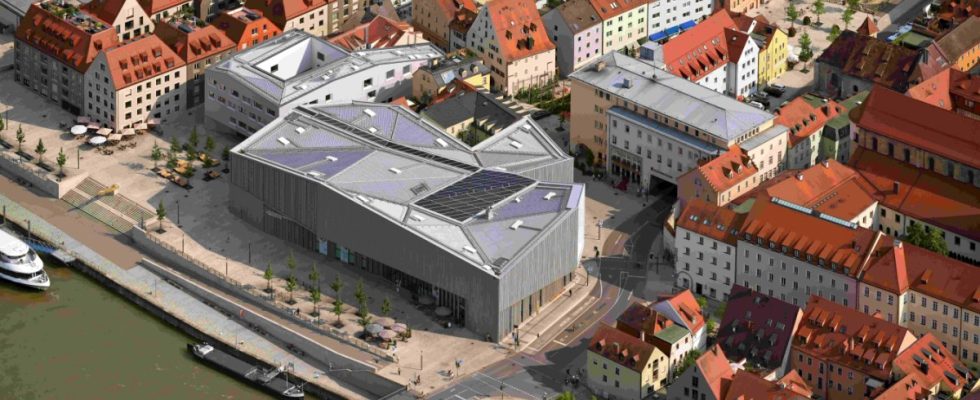Viewed from ground level, the House of Bavarian History in Regensburg appears anything but delicate with its massive ceramic façade. The roof, on the other hand, is intended to be somewhat reminiscent of the surrounding buildings in the old town, as the sloping surfaces are so small and jagged. In addition, the height was adjusted to accommodate the not exactly small exhibits. Unfortunately, only a few people get to see this sight because you would have to climb the cathedral to see it.
A few weeks ago, however, craftsmen climbed onto the roof of the museum because solar panels were to be installed up there. Director Richard Loibl is pursuing an ambitious plan: The House of Bavarian History will probably be the first museum in the world to become completely energy self-sufficient. The heating system already draws heat from the city’s wastewater, but the heat pumps still draw on the public power grid.
It will stay that way for the time being. According to museum spokeswoman Natascha Zödi-Schmidt, 30 damaged areas were discovered during the roof inspection: “This means that our solar project is currently at a standstill, which we very much regret.”
With construction costs of 100 million euros and an operating time of less than five years, a leaky roof is a nasty surprise, at least for laypeople. According to BR, Bavaria’s Science Minister Markus Blume (CSU) also spoke of a “big nuisance”.
Berthold Schneider from the Regensburg State Building Authority explains, however, that the damage is nothing unusual given the design of the roof. The special architecture makes it vulnerable. Because the construction company’s warranty period is about to expire, the sensitive roof will now be examined very closely and, according to Schneider, re-evaluated. Only then are the photovoltaic panels added. However, it is not yet possible to say how long this will take.
After all, viewed from below, nothing changes. Museum operations in Regensburg are not affected due to the work on the roof. According to Schneider, it doesn’t rain in either, so there’s no need to set up buckets. The writer Oskar Maria Graf’s holy lederhosen stays dry, and that’s the main thing.

